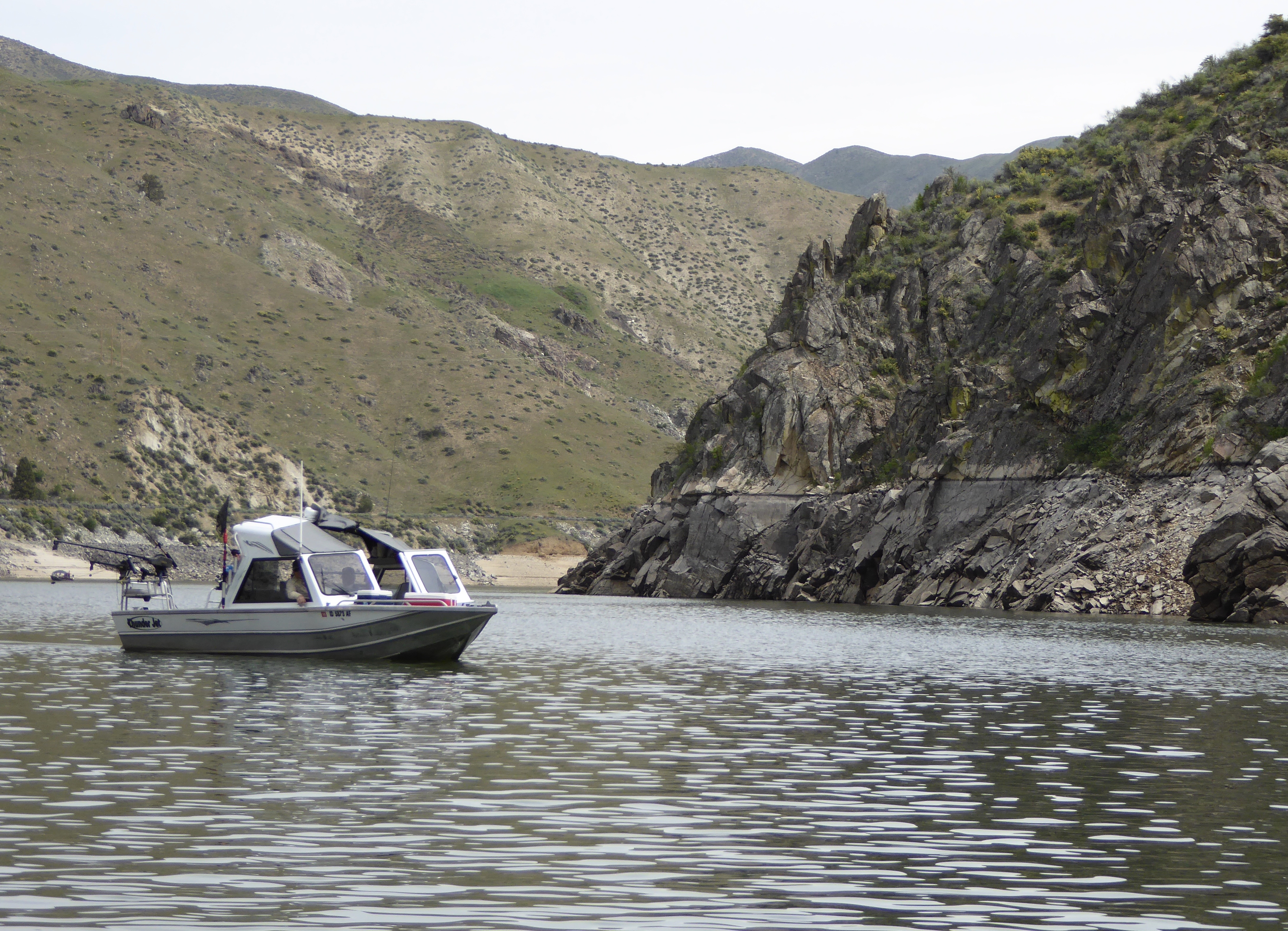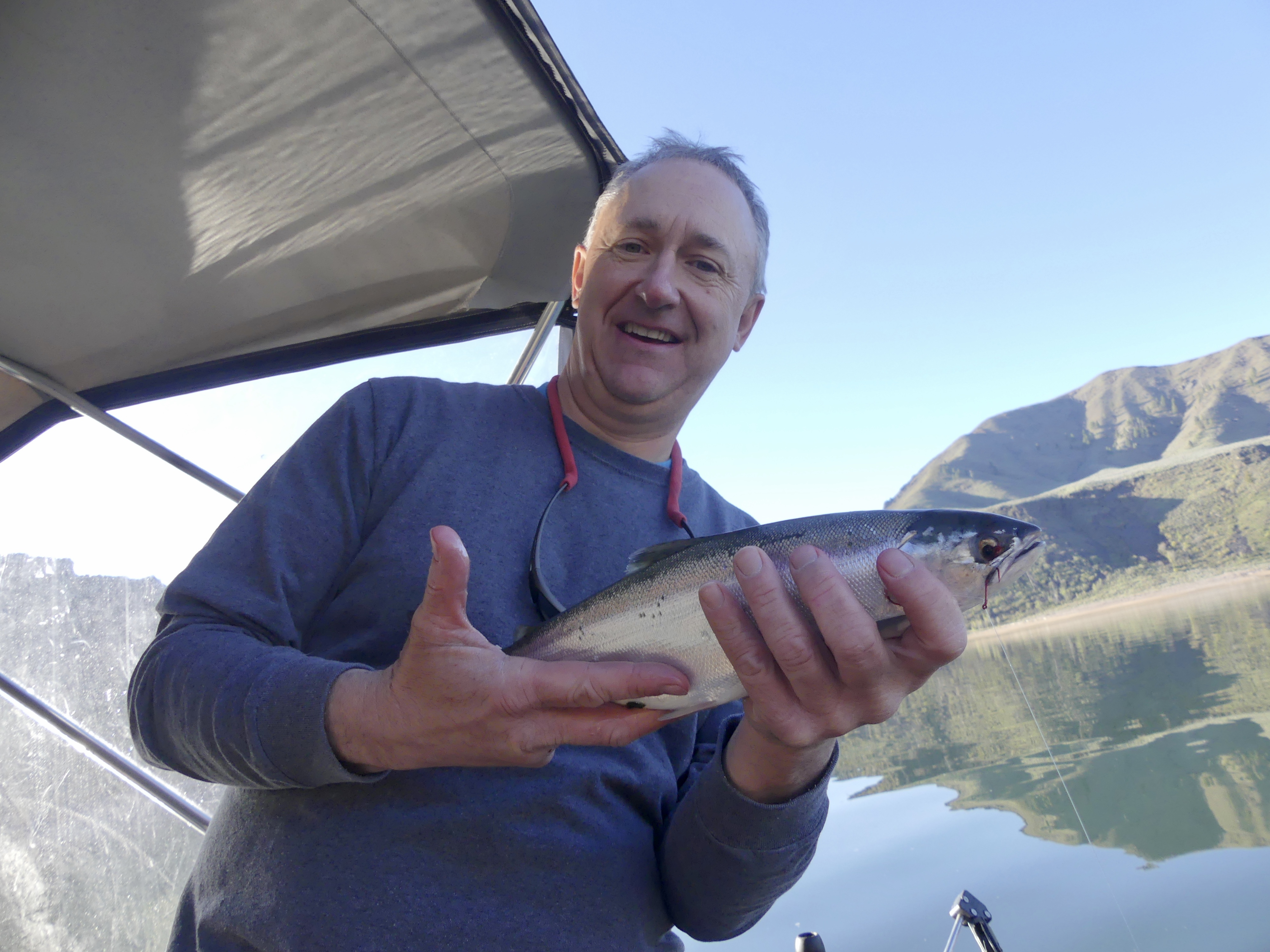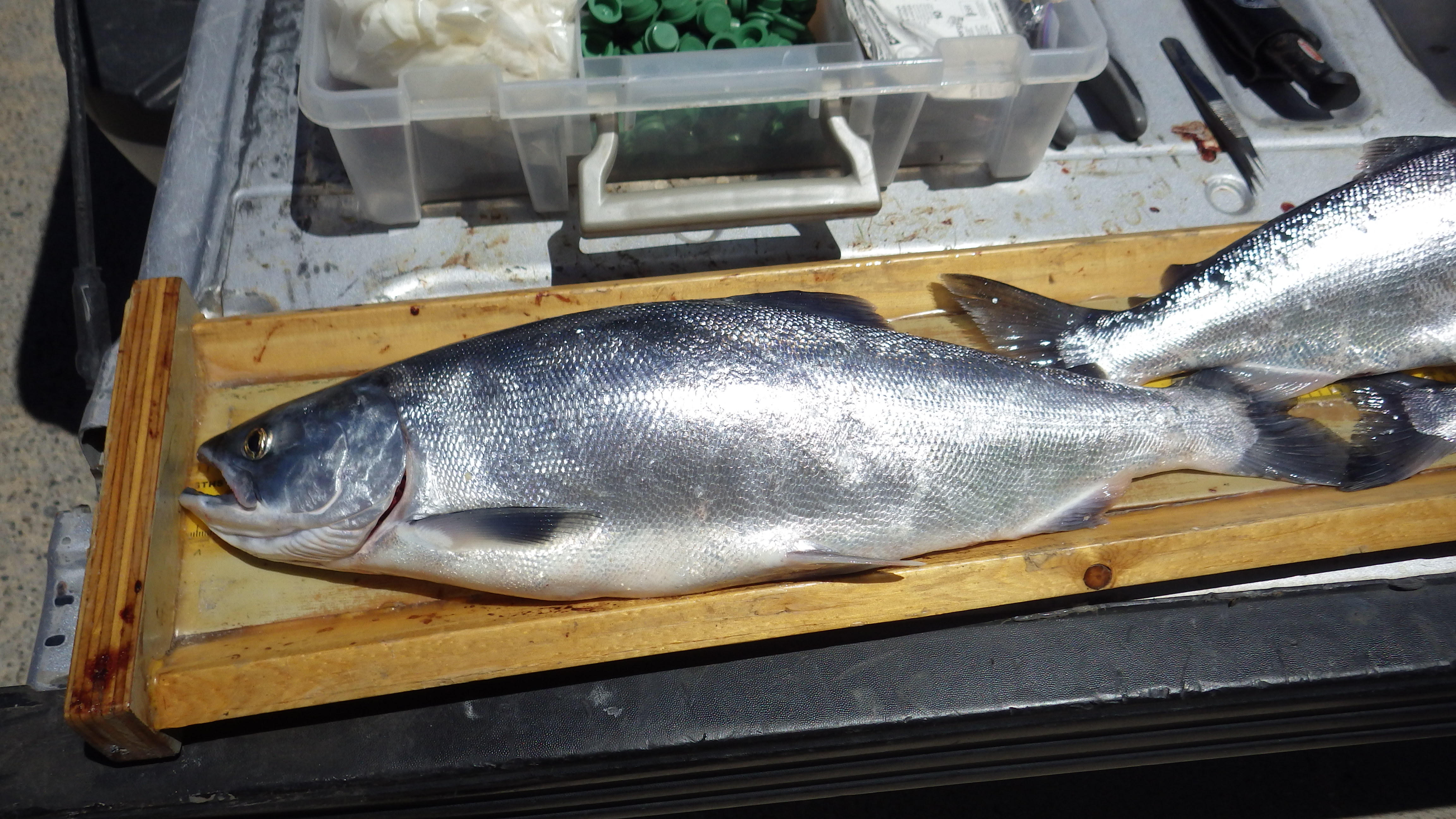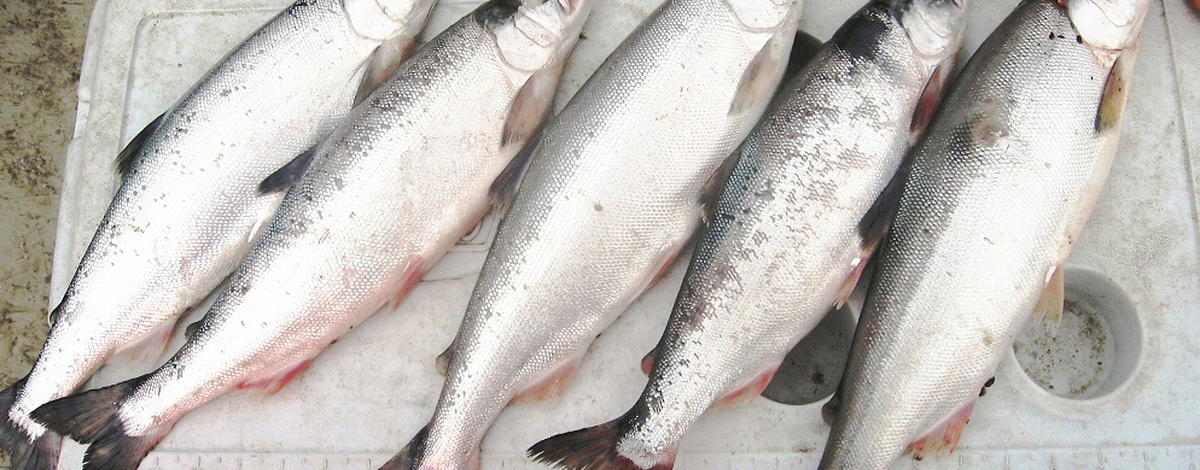Prized for their fighting ability and great table fare, kokanee salmon’s popularity continues to grow across the West. That trend includes Idaho, and for good reason: Fish and Game manages quality kokanee fisheries around the state, including in a trio of destinations – the kokanee "silver triangle" – that are a short drive from Idaho’s largest population center.

Lucky Peak, Arrowrock, and Anderson Ranch — three reservoirs in the Boise River system — provide some of the best kokanee fishing the state has to offer, and the 2019 season is just getting started.
Close by, but each a little different
Generally speaking, each reservoir offers something a little different for anglers. Lucky Peak is closest for Treasure Valley residents and typically the easiest to access. While this makes it an ideal spot for a spur-of-the-moment fishing trip, it also means Lucky Peak can get a little crowded, particularly in the summer, with both anglers and recreational boaters.
“When Lucky Peak is rolling, there could be 30 to 40 boats on the water fishing on any given weekend morning,” said Fish and Game regional fisheries biologist John Cassinelli, whose work encompasses both Lucky Peak Reservoir and Arrowrock Reservoir.
Access can be a little trickier upstream at Arrowrock Reservoir, depending on fluctuations in water levels and road conditions. The tradeoff is that Arrowrock kokanee tend to be slightly larger than those at Lucky Peak, and the reservoir tends to be less crowded.
Anderson Ranch is higher in elevation than the other two reservoirs, and farther from the beaten path, but typically has the greatest abundance of kokanee. Recently, Anderson Ranch has the highest catch rates of the three reservoirs, and it is the only one that has a Kokanee population driven by natural reproduction.
In addition to kokanee, Anglers at Lucky Peak and Anderson Ranch have an opportunity to haul in a fall Chinook salmon, which Fish and Game has stocked in small numbers. All three reservoirs are also stocked with rainbow trout.
Residual effects of "Snowpocalypse '17"
Cassinelli said he anticipates catch rates will be down at both Arrowrock and Lucky Peak this year, a lingering side effect of the 2017 “snowpocalypse.” Both reservoirs are hatchery stock-dependent fisheries, and Fish and Game typically stocks kokanee as 4-inch fingerlings. They grow rapidly, reach maturity and die after they spawn, which normally happens when the fish are two or three years old.
“The year class that people would be fishing this year would have been stocked in 2017, when we had record high flows,” Cassinelli explained. “Survival was likely down that year.”
Cassinelli added there is a silver lining in the silver triangle.
“Because kokanee are very density-dependent, the fewer there are, the bigger they tend to get. There are fish in excess of 16 to 17 inches that are coming out of those reservoirs right now,” he said.
While an average Idaho kokanee falls somewhere in the 10- to 12-inch range, fish in Arrowrock and Lucky Peak are averaging somewhere in the 14- to 17-inch range.
“It’s pretty similar between the two reservoirs right now,” Cassinelli said.
Managing kokanee between snow and fire storms
Managing kokanee is tricky. Biologists have to carefully monitor catch rates and kokanee sizes in reservoirs and lakes. If populations are lower, average size may be larger. High kokanee numbers can result in too much competition for food, meaning kokanee tend to be smaller.
High numbers of small kokanee doesn't necessarily equate to higher catch rates, as the smaller fish can actually be more difficult to catch using traditional methods.

So managing kokanee is a balancing act, and finding the “sweet spot” between too few big fish and too many small fish is key to maintaining a quality kokanee fishery. Fisheries managers have a number of options to help a lake or reservoir reach that balance, including adjusting stocking levels on the input side of the equation, or adjusting bag and possession limits on the output side.
In Anderson Ranch Reservoir, which has numerous tributaries, there has historically been an overabundance of kokanee due to natural spawning and successful reproduction.
“Because these fish are so density dependent, we had a lot of fish, but they were really small,” said Magic Valley Region fisheries biologist Joe Thiessen, who manages Anderson Ranch Reservoir. “And because of that history of overabundance, Anderson Ranch has a 25 fish limit to reduce those densities.”
While the bag limit remains 25 kokanee, the historical norm at Anderson Ranch Reservoir — higher densities and smaller fish size — changed in 2012 in the aftermath of the Pony Complex fires.
“After that, the sediment discharge that came from the hills absolutely wrecked spawning potential in the South Fork Boise River, and other major tributaries,” Thiessen said.
Poor spawning conditions led to poor natural recruitment in 2012, 2013, and 2014 — which actually helped bring the fishery into balance.
“It was a shock to the system, and all of a sudden, there was a large food availability to the fish that remained,” Thiessen said. “The result was that Anderson Ranch became a world-class kokanee fishery, which it has been since 2017.”
Be ready for big fish

Thiessen said the net surveys biologists conducted last summer showed an average kokanee size of about 13.5 to 14 inches, and the average size of kokanee caught in 2018 was about 16.5 inches, according to angler surveys.
“We saw so many large fish get hauled out of there last year that we thought they were three-year fish,” Thiessen said. “But most of the population was actually two-year fish. They’ve had a whole extra year to grow, so we have good abundances of large, three-year fish now, and a really strong age class behind it that will probably make up the bulk of 10- to 14-inch fish this year.”
Thiessen said that as the tributaries have recovered, biologists are increasingly concerned that Anderson Ranch is trending back in the direction from which it came: kokanee so abundant anglers may see much smaller average sizes. To keep the fishery in that sweet spot, the bag limit has remained high. Biologists are hopeful that the Chinook that have been stocked in Anderson Ranch may also help keep the kokanee population in balance.
“The message to anglers is to hit Anderson while the fishing is good,” Thiessen said.

